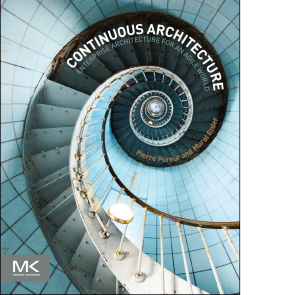The Benefits of Continuous Architecture

The cost-quality-time triangle is a well-known project management aid that basically states the key constraints of any project.

The basic premise is that it is not possible to optimize all three corners of the triangle; you are asked to pick any of the two corners and sacrifice the third.
We do not claim that Continuous Architecture solves this problem, but the triangle does present a good context to think about benefits of Continuous Architecture. If we identify good architecture as representing quality in a software solution, then with Continuous Architecture, we have a mechanism that helps us balance time and cost. Another way of saying this is that Continuous Architecture helps us balance time and cost constraints while not sacrificing quality.
The time dimension is a key aspect of Continuous Architecture. We believe that architectural practices should be aligned with Agile practices and not contradict them. In other words, we are continuously developing and improving the architecture rather than doing it once and creating the Big Architecture up Front (BARF). As we discuss in detail in our book (“Continuous Architecture“- http://www.store.elsevier.com/9780128032848) and elsewhere in this blog, Continuous Architecture puts special emphasis on Quality Attributes (Principle 2: Focus on Quality Attributes, not on functional requirements). We believe that cost is one of the Quality Attributes that is often overlooked but is critical in making the correct architectural decisions.
Continuous Architecture does not solve the cost-quality-time triangle, but it gives us tools to balance it while maintaining quality. An element that the cost-quality-time triangle does not address is sustainability. Most large enterprises have a complex technology and application landscape as a result of years of business change and IT initiatives. Agile and Continuous Development practices focus on delivering solutions and ignore addressing this complexity. Continuous Architecture tackles this complexity and strives to create a sustainable model for individual software applications as well as the overall enterprise.
Applying Continuous Architecture at the individual application level enables a sustainable delivery model and a coherent technology platform resilient against future change. Applying Continuous Architecture at the
enterprise level enables increased efficiency in delivering solutions and a healthy ecosystem of common platforms.
The Benefits of Continuous Architecture | Continuous Architecture in Practice 5:52 pm on December 2, 2015 Permalink |
[…] The Benefits of Continuous Architecture […]
LikeLike